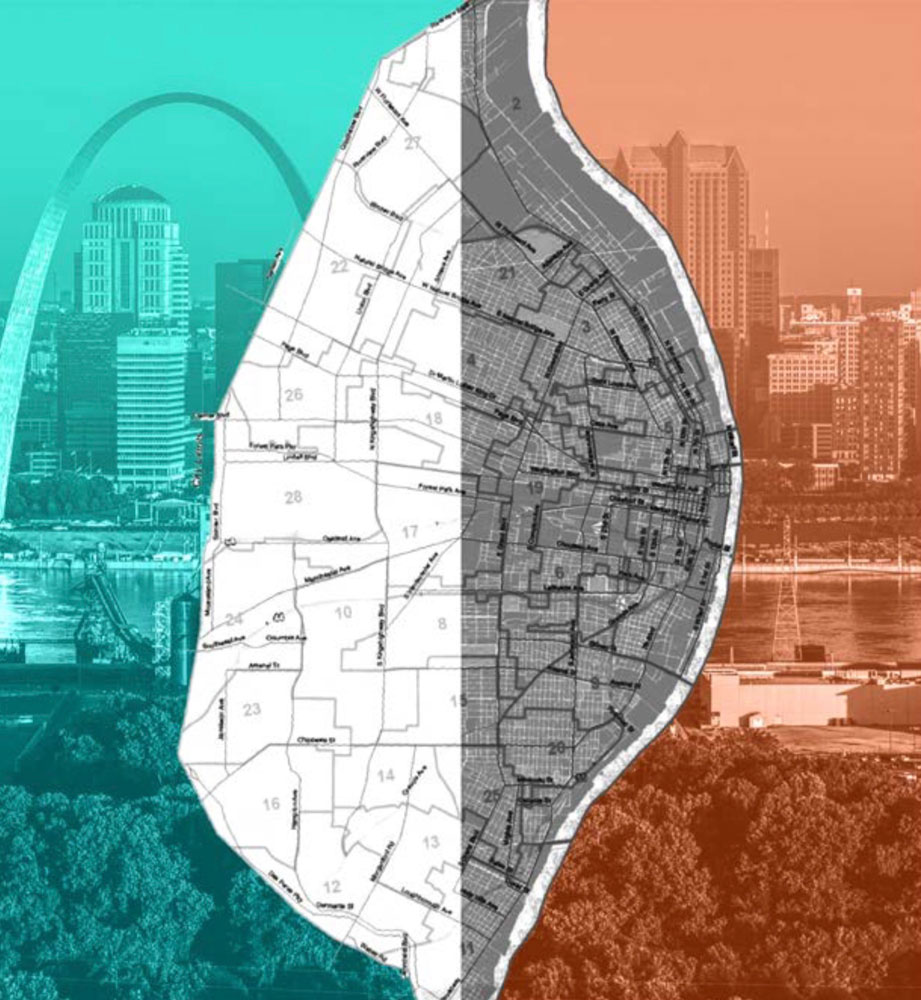
August 31, 2019; St. Louis Public Radio
Environmental Racism in St. Louis, a new report released by the Interdisciplinary Environmental Clinic at Washington University School of Law, identifies major race-based environmental and health disparities in the Gateway City.
The report, explains Jeremy Goodwin of St. Louis Public Radio, was conducted on behalf of the Environmental Justice Roundtable, a community coalition that includes Action St. Louis, ArchCity Defenders, Dutchtown South Community Corporation, and the St. Louis chapter of the Sierra Club.
Among the report’s leading findings are the following:
- Black children in the city of St. Louis are 2.4 times more likely than white children to test positive for lead in their blood and account for more than 70 percent of children suffering from lead poisoning. Overall, children in St. Louis are twice as likely to suffer from lead poisoning as children statewide in Missouri.
- Black children in St. Louis make roughly 10 times more emergency room visits for asthma each year than white children. In 2015, Black children made 42.44 visits per 1,000 children for asthma, while white children only made 3.93 visits per 1,000 children.
- More than 90 percent of the city’s vacant properties are located in majority-Black neighborhoods, with a quarter of vacant properties in St. Louis located in three neighborhoods—Wells-Goodfellow, JeffVanderLou, and Greater Ville—whose populations are at least 97-percent Black as of the 2010 federal census.
All told, the report identifies racial disparities in St. Louis in eight principal areas in total: lead poisoning, asthma, mold, air pollution, home energy costs, access to healthy food, vacant properties, and illegal trash dumping.
“Many of the negative health impacts cited in the report,” notes Goodwin, “relate to substandard housing and proximity to vacant properties and industrial sites. Such buildings often contain pollutants including asbestos, lead-based paint. and industrial chemicals.”
Sign up for our free newsletters
Subscribe to NPQ's newsletters to have our top stories delivered directly to your inbox.
By signing up, you agree to our privacy policy and terms of use, and to receive messages from NPQ and our partners.
Goodwin adds, “Beyond the risk posed by crumbling buildings containing pollutants outlawed by current building codes, vacant properties are also more likely to be the sites of illegal dumping of hazardous materials. According to the report, the six neighborhoods with the most complaints about illegal dumping—Baden, Dutchtown, Greater Ville, Penrose, Walnut Park East, and Wells-Goodfellow—are all majority-Black.”
Kayla Reed, a co-director of Action St. Louis, one of the study’s community partners, observes, “The environment in areas that are predominantly Black produce worse outcomes for families and children than other areas. So, if you live by O’Fallon Park in North City, your child is more susceptible to things like asthma versus a child that grows up in the Shaw neighborhood.” In fact, according to the report, the City’s 2018 Equity Indicators Baseline Report gave St. Louis the worst possible score for racial inequity (1 out of 100) regarding childhood asthma.
Amanda Colon-Smith, executive director of Dutchtown South Community Corporation, another of the study’s community partners, notes that, “Some of the issues around vacancy continue to be very persistent and deeply troubling.” However, she adds, intervention can make a difference. “There are so many benefits to reinvesting into the vacant structures in our neighborhood that, if done intentionally and thoughtfully, will help to undo and combat the decades of disinvestment in redlined neighborhoods.”
The goal, of course, is that the report will spur action to change these numbers. According to Reed, the report identifies “some issues that are impacting folks in a framework that is really helpful to understand what’s exactly wrong, so that we can figure out a way forward.”
One of the more somber observations, however, comes in the report’s introductory section, which cites findings of a 1987 national study by the United Church of Christ’s Commission on Racial Justice. That study, titled Toxic Wastes and Race in the United States, identified St. Louis as one of six cities with both large Black populations and high numbers of toxic waste sites; the city at the time reportedly had a total of 160 identified uncontrolled toxic waste sites.
“This history is by no means behind us,” the report authors soberly point out.—Steve Dubb











